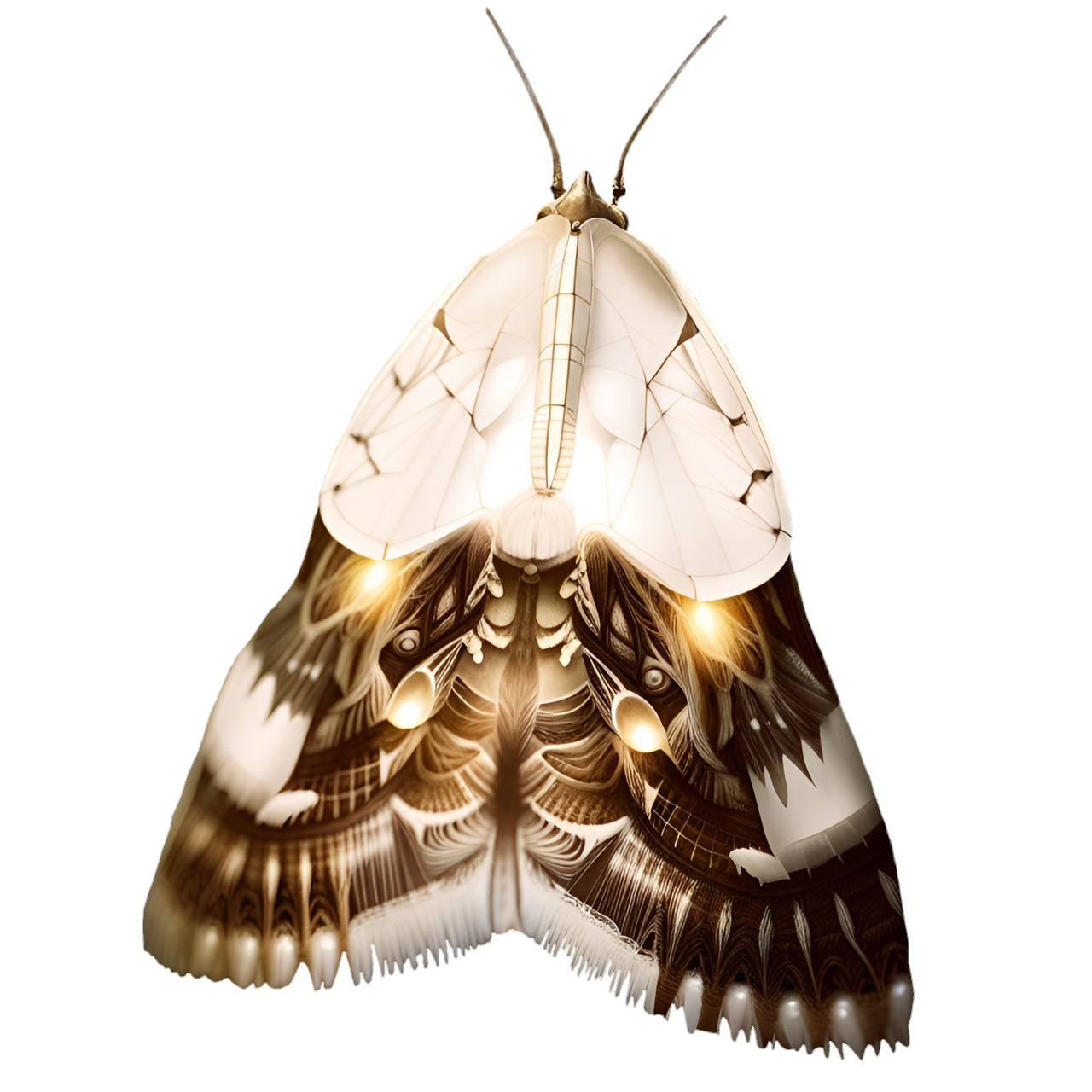Pallidus Moth
First AbilityRithaldis' Charge Thanks to Rithaldis' Charge, solar moths can absorb and store up radiant energy inside their bodies without limit and cannot be harmed by radiant energy (sunlight, radiation, solar plasma). They can convert this into magic energy, use it to strengthen their muscles or re-release it like an Aura at will. However, unlike most other manifestations, they cannot produce their own radiant energy--they are reliant on a source.
Second AbilityAzowyr's Slip By using Azowyr's Slip, anything that touches their body when this ability is active will cause their flesh to transform into shadow, most matter passing right through harmlessly. This isn't something they do consciously, automatically shifting only the parts of them being interacted with and quickly reverting back once this contact ends.
|
Anatomy |
Original Ancestor | Lifespan | Wingspan |
|---|---|---|
Acontia lucida Pale Shoulder | 2 Years | 1-1.2 in 26-30 mm |
Coloration |
|---|
Head, thorax and abdomen are white while it's body is covered in dark brown marbling and mottling. This brown turns charcoal gray in their magic form while its pale white takes on an eerie glow. |
Diet |
Life Cycle |
As adults, Pallida are naturally attracted to light and they are capable of echolocation. In fact, they can even make a clicking sound to frighten predators! Adults court eachother in the air from May to August, two different generations mixing together. Clusters of tiny eggs are laid on the underside of favorite food plants, various patterns camouflaging them. Caterpillars feed only at night, hiding under plants during the day. Pupa wait out the winter under the soil or dead leaves, usualy below or nearby the plants they were born on. After metamorphosis, Pallidus are drawn to grasslands or shurblands, feeding on the nectar of wildflowers or flowering vines only in the night, resting on vegetation during the day. These are not a migratory species like some other solar moths, usually remaining in whatever region they are born. |
Habitat |
Pallidus moths are a common moth across Eluziar, especially in the Tenebrous Chain, Eluzian Valley and Flumen Pontem, but also in Sesli Plato, Shamsi Desert and Parsa. In these regions, Pallidus frequent wilflowers in grasslands, meadows, steppes, desert dunes and along roadsides. They can adapt to both arid, xeric conditions or thrive just as well in cooler, more lush habitats. |






Comments